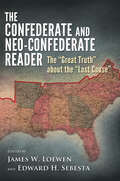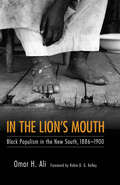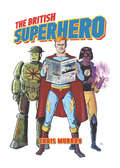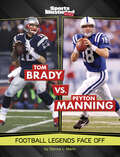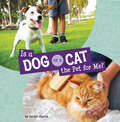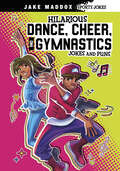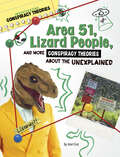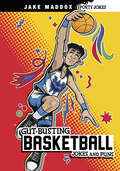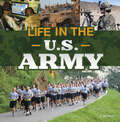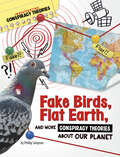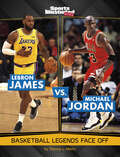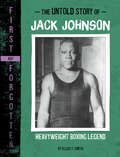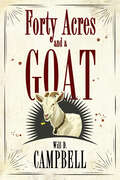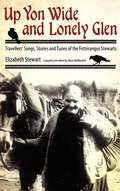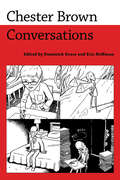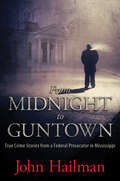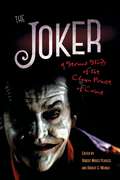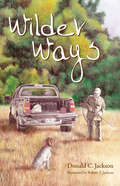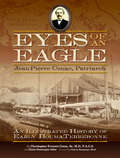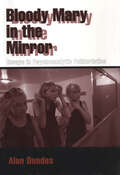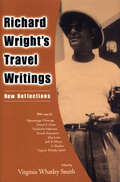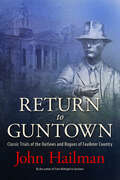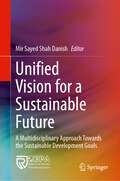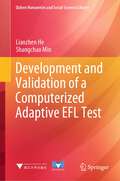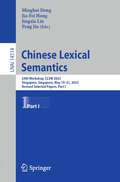- Table View
- List View
The Confederate and Neo-Confederate Reader: The Great Truth about the Lost Cause
by James W. Loewen and Edward H. SebestaMost Americans hold basic misconceptions about the Confederacy, the Civil War, and the actions of subsequent neo-Confederates. For example, two thirds of Americans—including most history teachers—think the Confederate States seceded for “states' rights.” This error persists because most have never read the key documents about the Confederacy. These documents have always been there. When South Carolina seceded, it published “Declaration of the Immediate Causes Which Induce and Justify the Secession of South Carolina from the Federal Union.” The document actually opposes states' rights. Its authors argue that Northern states were ignoring the rights of slave owners as identified by Congress and in the Constitution. Similarly, Mississippi's “Declaration of the Immediate Causes. . .” says, “Our position is thoroughly identified with the institution of slavery—the greatest material interest of the world.” Later documents in this collection show how neo-Confederates obfuscated this truth, starting around 1890. The evidence also points to the centrality of race in neo-Confederate thought even today and to the continuing importance of neo-Confederate ideas in American political life. The 150th anniversary of secession and civil war provides a moment for all Americans to read these documents, properly set in context by award-winning sociologist and historian James W. Loewen and coeditor, Edward H. Sebesta, to put in perspective the mythology of the Old South.
In the Lion's Mouth: Black Populism in the New South, 1886-1900 (Margaret Walker Alexander Series in African American Studies)
by Omar H. AliFollowing the collapse of Reconstruction in 1877, African Americans organized a movement—distinct from the white Populist movement—in the South and parts of the Midwest for economic and political reform: Black Populism. Between 1886 and 1898, tens of thousands of black farmers, sharecroppers, and agrarian workers created their own organizations and tactics primarily under black leadership. As Black Populism grew as a regional force, it met fierce resistance from the Southern Democrats and constituent white planters and local merchants. African Americans carried out a wide range of activities in this hostile environment. They established farming exchanges and cooperatives; raised money for schools; published newspapers; lobbied for better agrarian legislation; mounted boycotts against agricultural trusts and business monopolies; carried out strikes for better wages; protested the convict lease system, segregated coach boxes, and lynching; demanded black jurors in cases involving black defendants; promoted local political reforms and federal supervision of elections; and ran independent and fusion campaigns. Growing out of the networks established by black churches and fraternal organizations, Black Populism found further expression in the Colored Agricultural Wheels, the southern branch of the Knights of Labor, the Cooperative Workers of America, the Farmers Union, and the Colored Farmers Alliance. In the early 1890s African Americans, together with their white counterparts, launched the People's Party and ran fusion campaigns with the Republican Party. By the turn of the century, Black Populism had been crushed by relentless attack, hostile propaganda, and targeted assassinations of leaders and foot soldiers of the movement. The movement's legacy remains, though, as the largest independent black political movement until the rise of the modern civil rights movement.
The British Superhero
by Chris MurrayChris Murray reveals the largely unknown and rather surprising history of the British superhero. It is often thought that Britain did not have its own superheroes, yet Murray demonstrates that there were a great many in Britain and that they were often used as a way to comment on the relationship between Britain and America. Sometimes they emulated the style of American comics, but they also frequently became sites of resistance to perceived American political and cultural hegemony, drawing upon satire and parody as a means of critique. Murray illustrates that the superhero genre is a blend of several influences, and that in British comics these influences were quite different from those in America, resulting in some contrasting approaches to the figure of the superhero. He identifies the origins of the superhero and supervillain in nineteenth-century popular culture such as the penny dreadfuls and boys' weeklies and in science fiction writing of the 1920s and 1930s. He traces the emergence of British superheroes in the 1940s, the advent of "fake" American comics, and the reformatting of reprinted material. Murray then chronicles the British Invasion of the 1980s and the pivotal roles in American superhero comics and film production held by British artists today. This book will challenge views about British superheroes and the comics creators who fashioned them. Murray brings to light a gallery of such comics heroes as the Amazing Mr X, Powerman, Streamline, Captain Zenith, Electroman, Mr Apollo, Masterman, Captain Universe, Marvelman, Kelly's Eye, Steel Claw, the Purple Hood, Captain Britain, Supercats, Bananaman, Paradax, Jack Staff, and SuperBob. He reminds us of the significance of many such creators and artists as Len Fullerton, Jock McCail, Jack Glass, Denis Gifford, Bob Monkhouse, Dennis M. Reader, Mick Anglo, Brendan McCarthy, Alan Moore, Grant Morrison, Dave Gibbons, and Mark Millar.
Tom Brady vs. Peyton Manning: Football Legends Face Off (Sports Illustrated Kids: Legend Vs. Legend Ser.)
by Dionna L. MannTom Brady and Peyton Manning are football superstars! Between the two, Brady has more career passing yards, but Manning leads in average passing yards per game. So which one is the all-time best? Young readers can decide for themselves by comparing the fantastic feats and stunning stats of two legendary pro football players.
Is a Dog or a Cat the Pet for Me? (This Or That Pets Ser.)
by Jaclyn JaycoxPurr. Woof! Both dogs and cats are great furry friends! Compare these two popular pets side by side. Which needs more exercise? Which pet stays cleaner? Does one cost more? Then decide which one might make the best pet for you!
Hilarious Dance, Cheer, and Gymnastics Jokes and Puns (Jake Maddox Sports Jokes Ser.)
by Jake Maddox Meagan WoodwardWhat do you call a dancing sheep? A baaa-llerina! What do you call a duck gymnast? A quack-robat! If you love dance, gymnastics, or cheerleading—and a good laugh—then this is the book for you! Hundreds of hilarious dance jokes, funny gymnastics riddles, and goofy cheerleading puns are sure to keep readers and their friends laughing from beginning to end.
Area 51, Lizard People, and More Conspiracy Theories about the Unexplained (Investigating Conspiracy Theories Ser.)
by Jose CruzDid an alien spacecraft crash near Roswell, New Mexico, in 1947? Is the U.S. government hiding alien secrets at Area 51? Could lizard people be in positions of power around the world? Conspiracy theories about the paranormal and other unexplained events go hand in hand. Get details about the theories to find out why people believe them and what experts say. Then put the conspiracy theories to the test. Can they be debunked, or is the truth still out there?
Gut-Busting Basketball Jokes and Puns (Jake Maddox Sports Jokes Ser.)
by Jake Maddox James LittlejohnWhen did the chicken stop running on the basketball court? When it got to the fowl line! What is a basketball player’s favorite food? A jam sandwich! If you love basketball—and a good laugh—then this is the book for you! Hundreds of the funniest basketball jokes, riddles, and puns are sure to keep readers and their friends laughing from beginning to end.
Life in the U.S. Army (Daily Life In The U. S. Military Ser.)
by Mo BarrettThe Army is the oldest branch of the U.S. military—even older than the country itself. Find out what daily life is like for these heroic fighters. Learn what they wear, where they live, and how they serve.
Fake Birds, Flat Earth, and More Conspiracy Theories about Our Planet (Investigating Conspiracy Theories Ser.)
by Phillip SimpsonCould Earth be flat? Are the birds you see actually robots designed to spy on people? Did giant sharks called megalodons really die out millions of years ago? Or are they still alive? Some people believe in conspiracy theories about the planet we call home. Take a deep dive into some of these conspiracy theories to discover how they started, why people believe them, and what scientists have to say. Will these conspiracy theories be debunked, or will questions linger?
LeBron James vs. Michael Jordan: Basketball Legends Face Off (Sports Illustrated Kids: Legend Vs. Legend Ser.)
by Dionna L. MannLeBron James and Michael Jordan are basketball superstars! Between the two, James has more playoff appearances, but Jordan leads in NBA championships. So which one is the all-time best? Young readers can decide for themselves by comparing the fantastic feats and stunning stats of two legendary pro basketball players.
The Untold Story of Jack Johnson: Heavyweight Boxing Legend (First But Forgotten Ser.)
by Elliott SmithYou may have heard about Muhammad Ali. But long before Ali entered the ring, Black boxer Jack Johnson was winning bouts and challenging ideas about race. With key biographical information and related historical events, this Capstone Captivate book uncovers Jack Johnson’s story and how his life and career demonstrate the challenges of being Black, talented, and famous in the United States. Dive into the First but Forgotten series to read rarely told stories from history.
Forty Acres and a Goat (Banner Books)
by Will D. CampbellIn Forty Acres and a Goat, Will D. Campbell (1924–2013) picks up where the award-winning Brother to a Dragonfly leaves off, accounting his adventures during the tumultuous civil rights era. As he navigates through the explosive 1960s, including pivotal moments like the integration of Little Rock High School and the assassination of Dr. Martin Luther King Jr., Brother Will finds his faith challenged. To further complicate matters, a series of jobs did not pan out as expected—pastorate in Louisiana, director of religious life at the University of Mississippi, and with the National Council of Churches—leaving Brother Will “with a call but no steeple.” In an effort to find his place as a preacher, he moves his family to a farm in rural Tennessee and fashions his own unique style of ministry and a maverick relationship with God, land, and all his fellow pilgrims.
Up Yon Wide and Lonely Glen: Travellers' Songs, Stories and Tunes of the Fetterangus Stewarts
by Elizabeth StewartElizabeth Stewart is a highly acclaimed singer, pianist, and accordionist whose reputation has spread widely not only as an outstanding musician but as the principal inheritor and advocate of her family and their music. First discovered by folklorists in the 1950s, the Stewarts of Fetterangus, including Elizabeth's mother Jean, her uncle Ned, and her aunt Lucy, have had immense musical influence. Lucy in particular became a celebrated ballad singer and in 1961 Smithsonian Folkways released a collection of her classic ballad recordings that brought the family's music and name to an international audience. Up Yon Wide and Lonely Glen is a significant memoir of Scottish Traveller life, containing stories, music, and songs from this prominent Traveller family. The book is the result of a close partnership between Elizabeth Stewart and Scottish folk singer and writer Alison McMorland. It details the ancestral history of Elizabeth Stewart's family, the story of her mother, the story of her aunt, and her own life story, framing and contextualizing the music and song examples and showing how totally integrated these art forms are with daily life. It is a remarkable portrait of a Traveller family from the perspective of its matrilineal line. The narrative, spanning five generations and written in Scots, captures the rhythms and idioms of Elizabeth Stewart's speaking voice and is extraordinary from a musical, cultural, sociological, and historical point of view. The book features 145 songs, eight original piano compositions, folktale versions, rhymes and riddles, and eighty fascinating illustrations, from the family of Elizabeth, her mother Jean (1912–1962) and her aunt Lucy (1901–1982). In addition, there are notes on the songs and a series of appendices. Up Yon Wide and Lonely Glen will appeal to those interested in traditional music, folklore, and folk song—and in particular, Scottish tradition.
Chester Brown: Conversations (Conversations with Comic Artists Series)
by Dominick Grace and Eric HoffmanThe early 1980s saw a revolution in mainstream comics—in subject matter, artistic integrity, and creators' rights—as new methods of publishing and distribution broadened the possibilities. Among those artists utilizing these new methods, Chester Brown (b. 1960) quickly developed a cult following due to the undeniable quality and originality of his Yummy Fur (1983–1994). Chester Brown: Conversations collects interviews covering all facets of the cartoonist's long career and includes several pieces from now-defunct periodicals and fanzines. It also includes original annotations from Chester Brown, provided especially for this book, in which he adds context, second thoughts, and other valuable insights into the interviews. Brown was among a new generation of artists whose work dealt with decidedly nonmainstream subjects. By the 1980s comics were, to quote a by-now well-worn phrase, “not just for kids anymore,” and subsequent censorious attacks by parents concerned about the more salacious material being published by the major publishers—subjects that routinely included adult language, realistic violence, drug use, and sexual content—began to roil the industry. Yummy Fur came of age during this storm and its often-offensive content, including dismembered, talking penises, led to controversy and censorship. With Brown's highly unconventional adaptations of the Gospels, and such comics memoirs as The Playboy(1991/1992) and I Never Liked You (1991–1994), Brown gradually moved away from the surrealistic, humor oriented strips toward autobiographical material far more restrained and elegiac in tone than his earlier strips. This work was followed by Louis Riel (1999–2003), Brown's critically acclaimed comic book biography of the controversial nineteenth-century Canadian revolutionary, and Paying for It (2011), his best-selling memoir on the life of a john.
From Midnight to Guntown: True Crime Stories from a Federal Prosecutor in Mississippi
by John HailmanAs a federal prosecutor in Mississippi for over thirty years, John Hailman worked with federal agents, lawyers, judges, and criminals of every stripe. In From Midnight to Guntown, he recounts amazing trials and bad guy antics from the darkly humorous to the needlessly tragic. In addition to bank robbers—generally the dumbest criminals—Hailman describes scam artists, hit men, protected witnesses, colorful informants, corrupt officials, bad guys with funny nicknames, over-the-top investigators, and those defendants who had a certain roguish charm. Several of his defendants and victims have since had whole books written about them: Dickie Scruggs, Emmett Till, Chicago gang leader Jeff Fort, and Paddy Mitchell, leader of the most successful bank robbery gang of the twentieth century. But Hailman delivers the inside story no one else can. He also recounts his scary experiences after 9/11 when he prosecuted terrorism cases.
The Joker: A Serious Study of the Clown Prince of Crime
by Robert Moses Peaslee and Robert G. WeinerAlong with Batman, Spider-Man, and Superman, the Joker stands out as one of the most recognizable comics characters in popular culture. While there has been a great deal of scholarly attention on superheroes, very little has been done to understand supervillains. This is the first academic work to provide a comprehensive study of this villain, illustrating why the Joker appears so relevant to audiences today. Batman's foe has cropped up in thousands of comics, numerous animated series, and three major blockbuster feature films since 1966. Actually, the Joker debuted in DC comics Batman 1 (1940) as the typical gangster, but the character evolved steadily into one of the most ominous in the history of sequential art. Batman and the Joker almost seemed to define each other as opposites, hero and nemesis, in a kind of psychological duality. Scholars from a wide array of disciplines look at the Joker through the lens of feature films, video games, comics, politics, magic and mysticism, psychology, animation, television, performance studies, and philosophy. As the first volume that examines the Joker as complex cultural and cross-media phenomenon, this collection adds to our understanding of the role comic book and cinematic villains play in the world and the ways various media affect their interpretation. Connecting the Clown Prince of Crime to bodies of thought as divergent as Karl Marx and Friedrich Nietzsche, contributors demonstrate the frightening ways in which we get the monsters we need.
Wilder Ways
by Donald C. JacksonIn Wilder Ways, Donald C. Jackson takes readers on a journey into the deep and very personal connections that can develop between people and wild places while hunting, fishing, and rambling across landscapes. Fishing by lantern light late at night for bullhead catfish on a small stream, hunting wood ducks and squirrels on his farm in north Mississippi, bow hunting deer as twilight creeps across a small clearing, handlining crabs in the Pascagoula River estuary, hunting caribou in Alaska and elk in Colorado, searching for blind fish in Ozark caves, and fighting a storm on an Indonesian river: Jackson leads us into reflections of our own journeys and helps us to understand that we can be part of a wilder way, often very near to our homes. We walk with him through the tall grass, wet with early morning dew, light tackle in hand, down to a “ditch” under a Mississippi highway bridge and then discover that the “ditch” is really a very fine stream full of fish. We recapture the essence of hunting by stalking fox squirrels in a small patch of hardwoods. We stand beside him, listening to the whistle of wings as ducks pass overhead in the pre-dawn light and fog that surround a tiny, brushy pond hidden in the woods. We smell the salt air and feel the power of a redfish as it strips line from the fishing reel while the sunset turns marsh to gold. We walk alone under the starlight along an Alaskan river after an afternoon of grayling fishing. We fall in love again with tents, tractors, and old brown dogs. Through the shared journeys in Wilder Ways, we link with the rhythms of the earth, understanding that the wilds are not something separate from us. We are all somewhat wilder than perhaps we ever imagine.
Eyes of an Eagle: Jean-Pierre Cenac, Patriarch: An Illustrated History of Early Houma-Terrebonne
by Christopher Everette Cenac Sr.Selected Book for the Louisiana Bicentennial Celebration, 2012In the year 1860, Jean-Pierre Cenac sailed from the sophisticated French city of Bordeaux to begin his new life in the city with the second busiest port of debarkation in the U.S. Two years before, he had descended the Pyrenees to Bordeaux from his home village of Barbazan-Debat, a terrain in direct contrast to the flatlands of Louisiana. He arrived in 1860, just when the U.S. Civil War began with the secession of the Southern states, and in New Orleans, just where there would be placed a prime military target as the war developed.Neither Creole nor Acadian, Pierre took his chances in the rural parish of Terrebonne on the coast of the Gulf of Mexico. Pierre's resolute nature, unflagging work ethic, steadfast determination, and farsighted vision earned him a place of respect he could never have imagined when he left his native country. How he forged his place in this new landscape echoes the life journeys of countless immigrants--yet remains uniquely his own. His story and his family's story exemplify the experiences of many nineteenth century immigrants to Louisiana and the experiences of their twentieth century descendants.
Bloody Mary in the Mirror: Essays in Psychoanalytic Folkloristics
by Alan DundesBloody Mary in the Mirror mixes Sigmund Freud with vampires and The Little Mermaid to see what new light psychoanalysis can bring to folklore techniques and forms. Ever since Freud published his analysis of Jewish jokes in 1905 and his disciple Otto Rank followed with his groundbreaking The Myth of the Birth of the Hero in 1909, the psychoanalytic study of folklore has been an acknowledged part of applied psychoanalysis. However, psychoanalysts, handicapped by their limited knowledge of folklore techniques, have tended to confine their efforts to the Bible, to classical mythology, and to the Grimm fairy tales. Most folklorists have been slow to consider psychoanalysis as a method of interpreting folklore. One notable exception is folklorist Alan Dundes. In the seven fascinating essays of Bloody Mary in the Mirror, psychoanalytic theory illuminates such folklore genres as legend (in the vampire tale), folktale (in the ancient Egyptian tale of two brothers), custom (in fraternity hazing and ritual fasting), and games (in the modern Greek game of “Long Donkey”). One of two essays Dundes coauthored with his daughter Lauren Dundes, professor of sociology at Western Maryland College, successfully probes the content of Disney's The Little Mermaid, yielding new insights into this popular reworking of a Hans Christian Andersen favorite. Among folk rituals investigated is the girl's game of “Bloody Mary.” Elementary or middle school-age girls huddle in a darkened bathroom awaiting the appearance in the mirror of a frightening apparition. The plausible analysis of this well-known—if somewhat puzzling—American rite is one of many surprising and enlightening finds in this book. All of the essays in this remarkable volume create new takes on old traditions. Bloody Mary in the Mirror is an expedition into psychoanalytic folklore techniques and constitutes a giant step towards realizing the potential Freud's work promises for folklore studies.
Richard Wright's Travel Writings: New Reflections
by Virginia Whatley SmithAttracted to remote lands by his interest in the postcolonial struggle, Richard Wright (1908-1960) became one of the few African Americans of his time to engage in travel writing. He went to emerging nations not as a sightseer but as a student of their cultures, learning the politics and the processes of social transformation. When Wright fled from the United States in 1946 to live as an expatriate in Paris, he was exposed to intellectual thoughts and challenges that transcended his social and political education in America. Three events broadened his world view—his introduction to French existentialism, the rise of the Pan-Africanist movement to decolonize Africa, and Indonesia's declaration of independence from colonial rule in 1945. During the 1950s as he traveled to emerging nations, his encounters produced four travel narratives—Black Power (1953), The Color Curtain (1956), Pagan Spain (1956), and White Man, Listen! (1957). Upon his death in 1960, he left behind an unfinished book on French West Africa, which exists only in notes, outlines, and a draft. Written by multinational scholars, this collection of essays exploring Wright's travel writings shows how in his hands the genre of travel writing resisted, adapted, or modified the forms and formats practiced by white authors. Enhanced by nine photographs taken by Wright during his travels, the essays focus on each of Wright's four separate narratives as well as upon his unfinished book and reveal how Wright drew on such non-Western influences as the African American slave narrative and Asian literature of protest and resistance. The essays critique Wright's representation of customs and people and employ a broad range of interpretive modes, including the theories of formalism, feminism, and postmodernism, among others. Wright's travel books are proven to be innovative narratives that laid down the roots of such later genres as postcolonial literature, contemporary travel writing, and resistance literature.
Return to Guntown: Classic Trials of the Outlaws and Rogues of Faulkner Country
by John HailmanA federal prosecutor in Mississippi for over thirty years, John Hailman routinely worked with federal agents, lawyers, judges, and criminals of every type imaginable. Encouraged by the acclaim for his earlier book, From Midnight to Guntown, he has opened even more of the astonishing cases within the over thirty-five boxes full of trial stories he carried into retirement. Hailman gathers colorful exploits of eccentric modern criminals from William Faulkner's Mississippi, where savvy victims often outwit their criminal perpetrators. Characters range from rich but incompetent drug lords and nationwide gun-runners to bumbling Dixie Mafia kidnappers. The book ends with “Fancy Frauds” in which ingenious con men (and women) offer hilarious but surprisingly sophisticated “special deals” on tax-free gold mines in Mexico and bargain (but bogus) Viagra. Chapters include “Guns, Bombs, and Moonshine Whiskey,” “Drug Kingpins Have Troubles Too,” “Crime Victims Fight Back,” “Mere Theft,” and “Fancy Frauds.” Written to entertain and enlighten, these stories will delight any fan of the true crime genre and anyone who enjoys good writing and the skill of a master storyteller.
Unified Vision for a Sustainable Future: A Multidisciplinary Approach Towards the Sustainable Development Goals
by Mir Sayed Shah DanishUnified Vision for a Sustainable Future: A Multidisciplinary Approach Towards the Sustainable Development Goals focuses on energy and the environment, highlighting interdisciplinary research, innovative strategies, and global initiatives presented at the International Conference on Collaborative Endeavors for Global Sustainability (CEGS 2024). The book explores the various pillars of sustainability – environmental, social, institutional, technical, and economic – and provides readers with case studies, practical solutions, and models for the UN’s Sustainable Development Goals. The book further examines the implications of these initiatives, analyzing their potential for long-lasting, sustainable impact.This book will appeal to a broad readership. Academics, researchers, policymakers, sustainability advocates, and anyone interested in global sustainability will find the book insightful.
Development and Validation of a Computerized Adaptive EFL Test (Qizhen Humanities and Social Sciences Library)
by Lianzhen He Shangchao MinThe book reports on the development and validation of a computerized adaptive EFL test, which is used as an exit requirement for non-English-major undergraduates at a major Chinese university. Unlike the tests reported in previous research on computerized adaptive language test (CALT), which were mostly designed to assess vocabulary, grammar and reading, this test consists of listening and reading components using both dichotomously-scored stand-alone items and polytomously-scored testlet-based items. The book is an essential and stimulating read for researchers and graduate students in the testing domain, particularly for those who are interested in CALT, item response theory (IRT), and quantitative research methods in general. It also constitutes a solid reference resource for L2 teachers and test developers. One of the distinctive features of the book is its operationalization of assessment use argument (AUA) in the investigation of the construct validity of the CALT. Another strength of this book is that it provides insight into the specific procedures that are followed in the development of CALTs and addresses a few key issues, such as local item dependence and DIF detection that were ignored in previous CALT development research.
Chinese Lexical Semantics: 24th Workshop, CLSW 2023, Singapore, Singapore, May 19–21, 2023, Revised Selected Papers, Part I (Lecture Notes in Computer Science #14514)
by Minghui Dong Jia-Fei Hong Jingxia Lin Peng JinThis book constitutes the refereed proceedings of the 24th Workshop on Chinese Lexical Semantics, CLSW 2023, held in Singapore, during May 19–21, 2023. The 61 full papers and 15 short papers included in this book were carefully reviewed and selected from 215 submissions. They are organized in the following topical sections: lexical semantics and related fields, including Theoretical Linguistics, Applied Linguistics, Computational Linguistics, Computational Lexicography, Phycological Linguistics, and Sociological linguistics.
